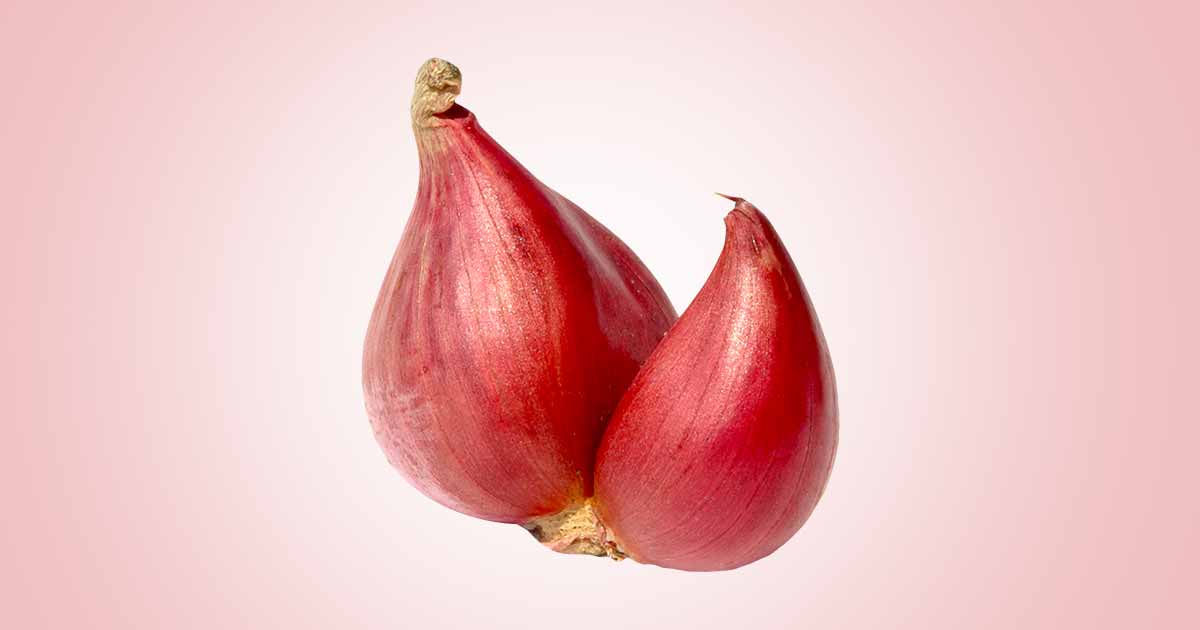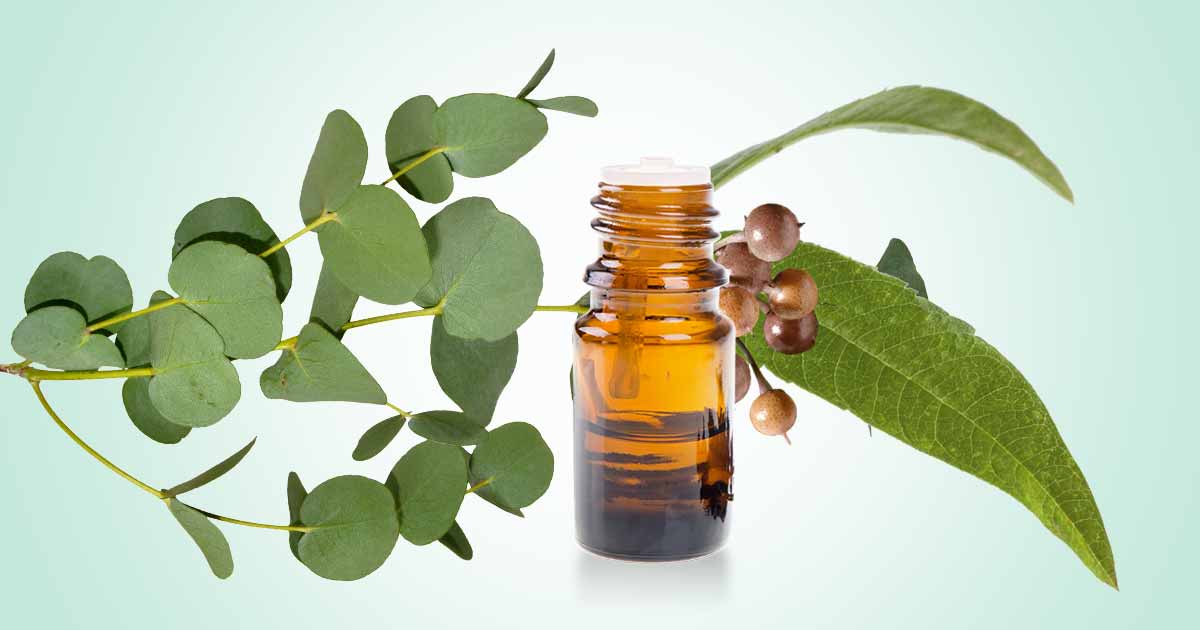Shallot, or echalote, is a herbaceous plant from the Amaryllidaceae family. It was classified as a separate species, but it is a cultivar of onion (Allium cepa var. aggregatum, Allium cepa var. ascalonicum). Other close relatives include garlic, scallions, leeks, chives, and the Chinese onion.
The word “shallot” comes from the Old French “escalogne,” from the Latin “Ascalonia caepa” (onion of Ashkalon). It is native to South-western Asia or Middle East. Indonesia and Thailand are the world’s largest producers.
Shallot is a perennial plant grown as an annual plant for the clusters of small bulbs or cloves. They are a form of bulbing multiplying onion, with smaller sizes, unlike regular onions that have one bulb.
The leaves are short, small, hollow, and cylindrical, and the flowers are typically lavender or red and borne in a compact umbel. The small bulbs develop in clusters on a common base. Inflorescence a spherical umbel The fruit is a globular capsule with up to 6 black, wrinkled seeds.
It has adventitious roots coming from the true stem. The true stem is very short, flattened, while the pseudostem is formed by the sheathing bases of successive leaves.
Shallot is a bulb that can be eaten raw or cooked as a vegetable, added as a garnish to salads. It has a mild onion flavor.
Shallot has medicinal benefits such as anti-inflammatory, anticancer, antiseptic, antispasmodic, diuretic, expectorant, febrifuge, anthelmintic, hypoglycaemic, cardiovascular, carminative, stomachic and tonic effects.
Composition
Shallot contain carbohydrate, vitamin A, B, and C. Phenolic compound and flavonoids are gallic acid, apigenin, eriodictyol, quercetin, isoquercetin, rutin, kaempferol, catechin, and tannic acid. Other compounds include sulphuric compounds (thiosulfinates), allicin, saponins, sugars, amino acids, enzymes, phytohormones (gibberellin and auxin), sapogenins, and ajoene.
- Polyphenols: apigenin, gallic acid, catechin, quercetin, kaempferol and tannic acids
- Volatile constituents: 2,5-Dimethylthiophene, allypropyldisulphide, methylpropyldisulphide, propanethiol, dipropyltrisulphide, allypropyltrisulphide, 2-Methyl-2-pentenal, allypropyldisulphide, methylpropylthiosulfonate, thiopropanal S-oxide, methyl propylthiosul-fonate.
Nutrition
A 100g of raw shallots contain 79.8 g of water, 2.5 g of proteins, 16.8 g of carbohydrates, 0.1 g of fats, 3.2 g of dietary fiber, 7.87 g of sugars, and 72 kcal of energy. (USDA).
Minerals: Potassium (334 mg), phosphorus (60 mg), magnesium (21 mg), calcium, iron, zinc, copper, sodium, manganese, selenium.
Vitamins: Thiamine, vitamin C, riboflavin, niacin, vitamin B-6, folate, choline, vitamin E, vitamin K.
Health Benefits of Shallot
Antioxidant effect:
Ismail et al. reported that shallot has more antioxidant capacity than spinach, kale, and cabbage. The antioxidant effect is independent of thermal treatment. It prevents reactive oxygen species damage, lipid peroxidation, diseases, and could be utilized in food preservation.
Quercetin oxidation metabolites from the dry outer scales of onions and shallots, and aminoethylcysteine ketimine decarboxylated dimer are important antioxidants isolated from shallots.
Antimicrobial activity:
Antimicrobial compounds in shallot includes terpenoid compounds, saponins (3,24-acetonideclethric acid, ursolic acid, randiasaponin IV, lekudinoside W)
The extract inhibit three non-tuberculous mycobacteria species (Mycobacterium fortuitum, M. smegmatis, and M. phlei)
Allium plants react with the sulfhydryl (SH) groups of target proteins, resulting in antimicrobial activities. Shallot extract inhibit Clostridium bolutinum spores (Bowles and Juneja). It also inhibits gram-positive bacteria Staphylococcus epidermidis and Bacillus subtilis (Saenthaweesuk et al.). Adeleye et al. reported that the extract inhibits Mycobacterium tuberculosis.
The extract also inhibit Gram-positive organisms like Bacillus cereus, Staphylococcus aureus, and Gram-negative microbes like Escherichia coli, Salmonella typhimurium bacterial strains.
Mozin et al. reported that shallot by-products inhibit E. coli and Salmonella spp. due to quercetin compounds.
Antifungal activity:
Ascalin, a compound in shallot, has antifungal activity. The plant extract inhibits zoonotic dermatophytes like Microsporum canis, Microsporum gypseum, and Trichophyton mentagrophyte, and also Candida albicans strains, and Aspergillus species.
Shallot extract has antifungal activity against B. cinerea, Penicillium sp., and Candida albicans.
Antiviral activity:
Chen et al. reported that shallot extract inhibits ADV-41 and ADV-3 infected A539 cell lines. Ascalin, in addition to its antifungal effect, also inhibited the HIV-1 reverse transcriptase.
Antiparasitic effect:
Azadbakht et al. reported that shallot extract inhibit Giardia. The essential oil is also toxic to adults and larvae of maize weevil, Sitophilus zeamais. Shallot extract also inhibits larval Leptotrombidium delicense.
Anti-inflammatory effect:
Shallot extract may have weak inhibition of NO synthesis in the LPS-induced macrophages cells (Keang-hleung), but Ounjaijean et al. reported a strong anti-inflammatory activity on LPS-induced endothelial cell lines, and on an acetic acid-induced vascular permeability model (Mohammadi-Motlagh HR, et al.).
Shallot extract may prevent gout, an inflammatory arthritis. The flavonoids, especially isorhamnetin-3-glucoside, play a role in the xanthine oxidase inhibition.
Lipid lowering effect:
Owoyele et al. reported that shallot extract decreased total cholesterol, high-density lipoprotein cholesterol, and low-density lipoprotein cholesterol levels, but less effect on triglyceride levels in white albino rats. It may also exhibit antiplatelet activity due to the organosulfur compounds and phenols.
Anti-diabetic effect:
Kongstad et al. reported that the quercetin compound in A. ascalonicum peel extract act as α-glucosidase inhibitors, and also up-regulates the expression of Ins and Glut-4 genes.
Shallot extract also raises the levels of antioxidant compounds – catalase (CAT), superoxide dismutase. (SOD) and glutathione peroxidase (GPx). Also in alloxan-diabetic rats, it reduced lipid compounds like very-low-density lipoprotein, and postprandial blood glucose.
Jalal et al. reported that there was a decrease in fasting blood glucose in fructose-induced insulin resistance animals. It improved the intraperitoneal glucose tolerance and reduced the fasting insulin resistance index, better than garlic extract.
Diabetes mellitus also increases the risk of male infertility. In a study by Luangpirom et al., shallot juice when administered to streptozotocin-induced diabetic mice attenuated the impaired testicular function. It improves gonadal index, sperm quality, increased spermatogonia, primary spermatocytes, spermatids, and internal and external diameters of tubules.
Anticancer effect:
Allium ascalonicum extracts have cytotoxic effect on liver cancer cell line HepG2, cell lines Jurkat and K562, and P3U1 myeloma cancer cell line. Cytotoxic compounds isolated include isoliquiritigenin, Cepa2 or alliospiroside A. The plant extract also inhibited angiogenesis both in vitro and in vivo.
Shallot juice just as cabbage, green pepper, mint leaf, ginger, pineapples, apple, broccoli, burdock, inactivate the mutagenicity of tryptophane pyrolysis products. Allium species may inhibit gallbladder cancer, multiple myeloma, gastric cancer, and breast cancer. A study in China also reported that the consumption of shallot and garlic reduces risk of multiple myeloma, just as soy food and green tea.
Wound healing effect:
Allium ascalonicum may increase wound healing by helping the recovery of the epidermis, active fibroblasts, blood vessels, and collagen fiber.
Skin lightening:
Phetmanee et al. reported that shallot from Phayao, Thailand exhibited low cytotoxicity and a high tyrosinase inhibitory effect. It decreased melanin content in cells, mushroom tyrosine activity and intracellular tyrosinase activity in B16F10 cells.
Hepatotoprotective activity:
Crude extract of A. ascalonicum has protective effect against liver damage induced by hyperuricemia. It lowers the uric acid levels similarly to allopurinol.
According to Ounjaijean et al., A. ascalonicum extract lowered the markers of liver damage such as alkaline phosphatase, alanine transaminase, aspartate transaminase, gamma-glutamyl transferase in ethanol-induced liver injury mice.
References
- https://fdc.nal.usda.gov/fdc-app.html#/food-details/170499/nutrients
- https://academicjournals.org/journal/JMPR/article-full-text-pdf/9A590A162267
- https://www.frontiersin.org/articles/10.3389/fnut.2022.903686/full
- https://www.nparks.gov.sg/florafaunaweb/flora/5/9/5929
- https://www.britannica.com/plant/shallot-plant
- https://pfaf.org/user/plant.aspx?LatinName=Allium+cepa+ascalonicum
- https://www.sciencedirect.com/science/article/pii/S2772275923000163












